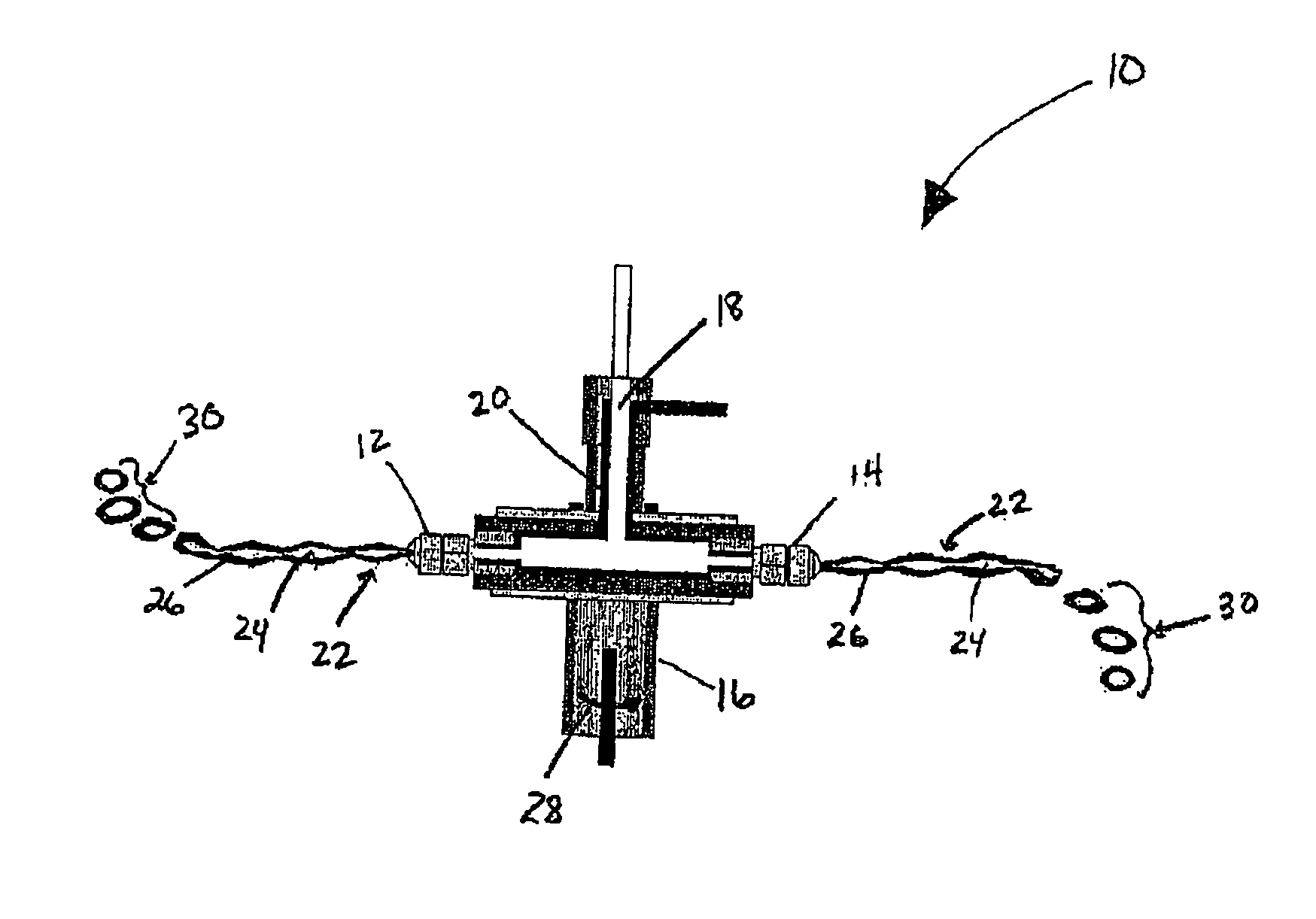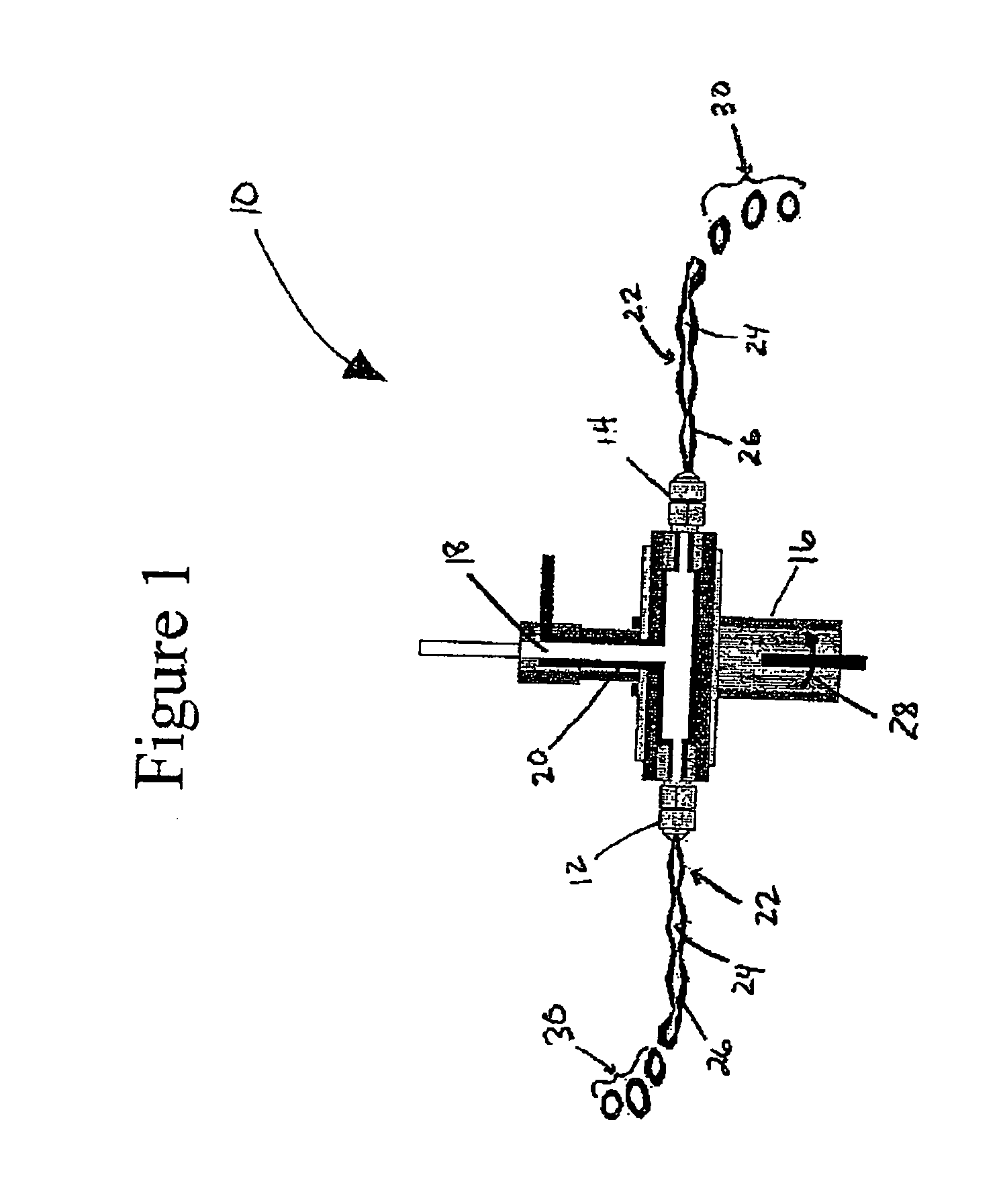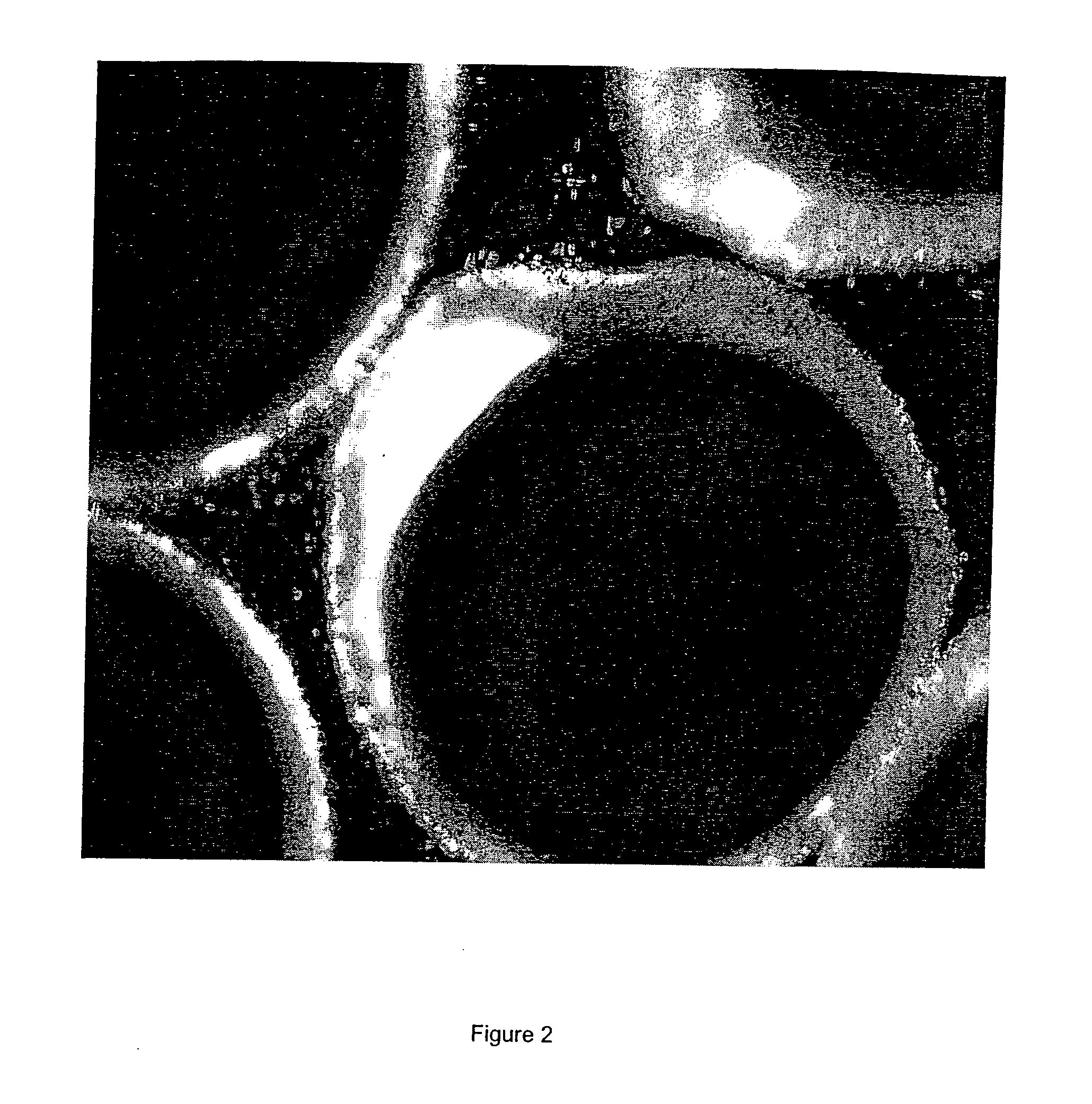Encapsulation Of Lipid-Based Formulations In Enteric Polymers
- Summary
- Abstract
- Description
- Claims
- Application Information
AI Technical Summary
Benefits of technology
Problems solved by technology
Method used
Image
Examples
example 1
[0063]Microcapsules containing a lipidic core comprising a mixed glyceride and a surfactant and an enteric shell comprising HPMCP-55 were prepared in accordance with the following composition and centrifugal coextrusion processing parameters.
Core Composition
[0064]
AmountComponents(% w / w)Partially hydrogenated cotton seed oil (Paramount ® C)75Polyglycolized Glycerides (Gelucire ® 44 / 14)25
Shell Composition
[0065]
ComponentsAmount (% w / w)Water*73.0Sodium Hydroxide3.2HPMCP-5522.4Glycerine1.4Note:pH adjusted to 5.63 with 10% glacial acetic acid*Water removed upon drying
Process Parameters
Nozzle Specification
[0066]Shell Orifice (outer)—1 mm[0067]Core Orifice (inner)—0.5 mm
Feed Rate (g / min)[0068]Shell (outer orifice)—43 g / min[0069]Core (inner orifice)—22 g / min
Rotational Speed (RPM)
[0070]Centrifugal Head Speed (RPM)—900 RPM
Collection Media
[0071]DRY-FLO® modified starch or Glacial Acetic Acid diluted to 20% w / w with water and trace amount of Tween® 80.
[0072]The optical micrographs of the microca...
example 2
[0073]Microcapsules containing a lipidic core comprising a medium chain triglyceride and a sparingly water-soluble drug and an enteric shell comprising HPMCP-55 were prepared in accordance with the following composition and centrifugal coextrusion processing parameters. The resulting microcapsule had poor aqueous solubility (<5 μg / mL).
Core Composition
[0074]
ComponentsComposition (% w / w)Medium Chain Triglyceride (Labrafac ® CC)85Polyglycolized Glycerides (Gelucire ® 44 / 14)10Drug (SB462795)5
Shell Composition
[0075]
ComponentsComposition (% w / w)Water*73.0Sodium Hydroxide3.2HPMCP-5522.4Glycerine1.4Note:pH adjusted to 5.63 with glacial acetic acid*Water removed upon drying
Process Parameters
Nozzle Specification
[0076]Shell Orifice (outer)—1 mm[0077]Core Orifice (inner)—0.5 mm
Feed Rate (g / min)[0078]Shell (outer orifice)—43 g / min[0079]Core (inner orifice)—22 g / min
Rotational Speed (RPM)
[0080]Centrifugal Head Speed (RPM)—900 RPM
Collection Media:
[0081]DRY-FLO® modified starch or[0082]Glacial Aceti...
example 3
[0086]Microcapsules containing a lipidic core and an enteric shell comprising HPMCP-55 are prepared in accordance with the following composition and double nozzle vibratory excitation processing parameters.
Core Composition
[0087]
ComponentsComposition (% w / w)Miglyol 81290%Active Ingredient10%
Shell Composition
[0088]
ComponentsComposition (% w / w)Water*83.31HPMCP-5512.08Glycerine (99.5%)1.25Tween ® 800.03NH3 (25%)3.33Note:Viscosity at 20° C.: 90 mPa / sec
Process Parameters
[0089]Shell Orifice (outer)—500 μm[0090]Core Orifice (inner)—300 μm
Vibration Frequency (Hz)
[0091]230 Hz
Distance from Nozzle to Surface of Solidification Solution (cm)[0092]15 cm
Solidification Solution
[0093]
ComponentsComposition (% w / w)Acetic Acid or Citric Acid9.01Water81.90Glycerin9.01Tween ® 800.08Microcapsules are subsequently dried.
Method of Using
[0094]The microcapsules of the present invention can be filled directly into capsule shells or blended with granules containing a different active and then fill...
PUM
| Property | Measurement | Unit |
|---|---|---|
| Temperature | aaaaa | aaaaa |
| Fraction | aaaaa | aaaaa |
| Fraction | aaaaa | aaaaa |
Abstract
Description
Claims
Application Information
 Login to View More
Login to View More - R&D
- Intellectual Property
- Life Sciences
- Materials
- Tech Scout
- Unparalleled Data Quality
- Higher Quality Content
- 60% Fewer Hallucinations
Browse by: Latest US Patents, China's latest patents, Technical Efficacy Thesaurus, Application Domain, Technology Topic, Popular Technical Reports.
© 2025 PatSnap. All rights reserved.Legal|Privacy policy|Modern Slavery Act Transparency Statement|Sitemap|About US| Contact US: help@patsnap.com



